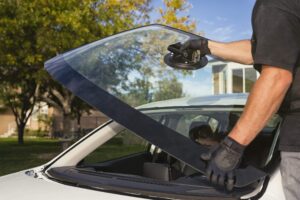Imagine yourself on the highway, enjoying the comfort and convenience of cutting-edge technology that anticipates your needs and assists you in safely navigating. This isn’t science fiction; it’s the reality of Advanced Driver Assistance Systems (ADAS) and driver safety features, revolutionizing the way we interact with our vehicles and the road.
It can be hard to understand these features, though, because there are so many acronyms and complex terms. Do not be nervous, fellow driver! A lot of information is given in this guide about cars ADAS systems. It talks about what they are, their main parts, and how they make driving better and more enjoyable.
Driving with Confidence: Active ADAS Systems & Driver Safety Features
What is ADAS Automotive?
ADAS is a group of electronic systems that use sensors, cameras, and radar to keep an eye on what’s going on around the car and how the driver is acting. These systems do more than just collect data; they also take action to stop crashes or lessen their effects. With this, you’ll have extra eyes, ears, and maybe even a helping hand on the road.

Active vs. Passive: Recognizing the Difference
ADAS features fall into two main categories: active and passive.
Passive ADAS Systems:
It warns the driver of potential hazards through visual or auditory alerts, leaving the final decision in their hands. Examples include:
- Blind Spot Warning (BSW): BSW alerts drivers to vehicles in their blind spot, enhancing safety by providing timely notifications of potential hazards in adjacent lanes. Moreover, it reduces the risk of collisions and improving overall driving awareness and confidence.
- Lane Departure Warning (LDW): Lane Departure Warning (LDW) alerts drivers when they unintentionally drift out of their lane, enhancing safety by prompting corrective action to prevent potential accidents caused by distraction or fatigue, promoting better driving habits and road awareness.
- Forward Collision Warning (FCW): Forward Collision Warning (FCW) alerts drivers of potential frontal collisions, enhancing safety by providing timely warnings to help mitigate or avoid accidents. Furthermore, this technology relies on sensors to detect the proximity of vehicles ahead, promoting increased awareness and proactive driving behaviors.
Active ADAS Systems
It takes a more proactive approach, automatically intervening to prevent accidents or minimize damage. These include:
- Automatic Emergency Braking (AEB): Automatic Emergency Braking (AEB) automatically applies brakes when a collision is imminent, enhancing safety by preventing or mitigating accidents.
- Lane Keep Assist (LKA): LKA gently guides the vehicle back into its lane upon detecting unintended drifting, enhancing safety and stability.
- Adaptive Cruise Control (ACC): ACC maintains a safe distance from the vehicle ahead by automatically adjusting speed. Furthermore, it enhances driving convenience and safety.
Unpacking the Technology: Key Components of ADAS
The magic behind Advanced Driver Assistance Systems (ADAS) lies in its sophisticated blend of hardware and software. Consequently, it seamlessly integrates sensors and algorithms to enhance driving safety and convenience.
- Sensors: Sensors such as radar, lidar, and cameras continuously scan the surroundings for obstacles, lane markings, and objects. Additionally, it ensures comprehensive environmental awareness for autonomous systems.
- Processing Unit: The processing unit acts as the powerful brain of the system, analyzing sensor data and detecting potential hazards. Furthermore, it initiates suitable responses to ensure safe navigation and operation.
- Actuators: Actuators translate decisions into actions by applying brakes, steering the vehicle, and triggering alerts. Additionally, ensuring the implementation of safety measures and responsive behavior based on the processed data.
Active Safety Features in Number: Benefits of ADAS
The integration of ADAS (Advanced Driver Assistance Systems) offers numerous benefits, including improved safety, enhanced driving comfort, and reduced accidents.
- Reduced Accident Rates: Studies indicate that ADAS features lead to significantly reduced accident rates by mitigating risks associated with human error, thereby enhancing overall road safety and preventing collisions.
- Enhanced Safety: Enhanced safety is achieved through features like Automatic Emergency Braking (AEB) and Lane Keeping Assist (LKA), which offer critical intervention, potentially saving lives and preventing injuries on the road.
- Improved Driver Comfort: Improved driver comfort is facilitated by features like Adaptive Cruise Control (ACC) and parking assist, which alleviate fatigue and stress, thereby enhancing the overall driving experience and making it more enjoyable.
- Increased Awareness: Car ADAS systems serve as additional eyes, alerting drivers to potential dangers they might overlook, thereby increasing awareness and enhancing overall safety while driving.
The Road Ahead: Future of ADAS
The future of ADAS is full of exciting possibilities. Expect innovations like more autonomy, smooth AI integration, and even more advanced safety measures that will completely transform driving and vehicle performance.
- More sophisticated features: Advancements in AI and sensor technology will lead to more intuitive and responsive systems.
- Greater automation: As technology evolves, car ADAS systems might transition towards semi-autonomous and eventually even fully autonomous driving.
- Widespread adoption: Car ADAS system is expected to become standard equipment in most vehicles, making roads safer for everyone.
Embracing the Future: Responsible Use of ADAS
While ADAS offers incredible potential, it’s crucial to remember these systems are not foolproof. They are designed to assist, not replace, responsible driving practices. Here are key points to remember:
- Always remain alert and in control: While ADAS offers assistance, drivers must remain alert and in control at all times. It should never replace attentive driving, as human oversight is essential for safe navigation.
- Understand system limitations: Understanding system limitations is vital. Each ADAS feature has its own capabilities and constraints. Familiarize yourself with your vehicle’s specific ADAS to ensure safe and effective use.
- Don’t rely solely on ADAS: It’s crucial not to solely rely on ADAS. Drivers should stay vigilant and ready to react to unexpected situations, as human intervention may be necessary for optimal safety on the road.
By embracing ADAS responsibly, Speedy Windshield Repair can unlock its potential to make driving safer, more comfortable, and more enjoyable for everyone. So, buckle up, stay informed, and experience our ADAS calibrations and other related services.
Final Thoughts:
To sum up, active ADAS systems and driver safety features are changing the way we drive, for the better. They are making it safer and more fun. With new technology, the future looks good, but be careful when you use these tools. Speedy Windshield Repair can make the roads safer for everyone if everyone stays alert and knows their limits. Don’t forget to buckle up, pay attention, and have fun!



